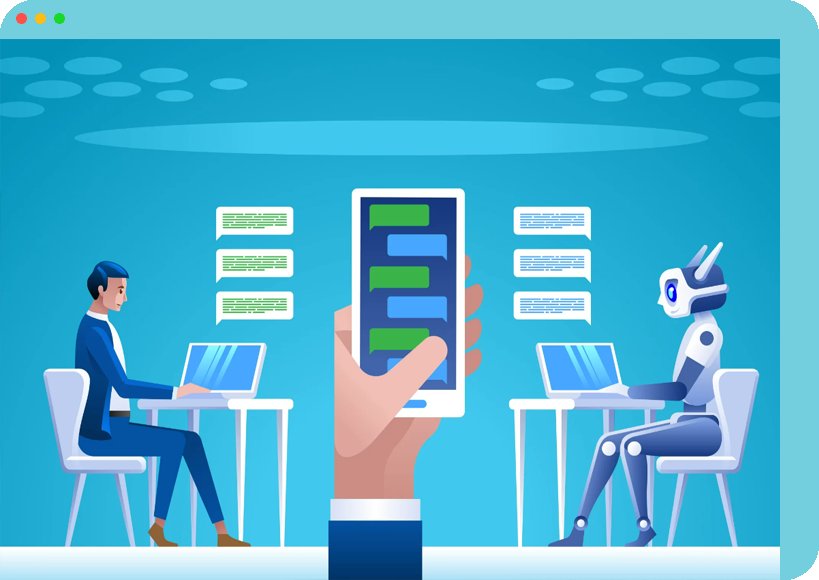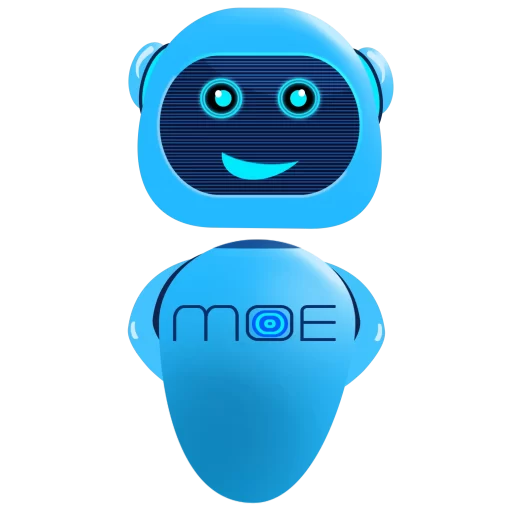Chatbot Analytics: Uncovering Insights to Optimize Performance and User Experience
Table of Contents
- Introduction
- What are Chatbot Analytics?
- Importance of Chatbot Analytics
- Key Metrics for Chatbot Performance Evaluation
- Response Time
- User Satisfaction
- Completion Rate
- Error Rate
- Conversation Length
- Utilizing Chatbot Analytics for Improvement
- Improving User Experience with Chatbot Analytics
- Enhancing Conversational Flow
- Personalization and Customization
- A/B Testing and Iterative Improvements
- Chatbot Analytics Tools and Platforms
- Common Challenges in Chatbot Analytics
- Conclusion
- FAQs
1. Introduction
In the rapidly evolving digital landscape, chatbots have become an integral part of customer service and engagement. These AI-powered virtual assistants interact with users, providing instant responses and assistance. However, for businesses to fully harness the potential of chatbots, it is crucial to analyze their performance and user experience through chatbot analytics.
2. What are Chatbot Analytics?
Chatbot analytics involves the collection, measurement, and analysis of data related to chatbot interactions. It provides insights into various aspects of chatbot performance, user behavior, and overall user experience. By leveraging these analytics, businesses can identify areas of improvement, enhance user engagement, and optimize the performance of their chatbot systems.

3. Importance of Chatbot Analytics
Understanding the importance of chatbot analytics is vital for organizations looking to leverage chatbots effectively. Here are a few key reasons why chatbot analytics is crucial:
a. Performance Evaluation:
Chatbot analytics allows businesses to evaluate the performance of their chatbot systems objectively. It helps measure key metrics such as response time, completion rate, error rate, and conversation length, providing insights into the effectiveness of the chatbot in meeting user expectations.
b. User Satisfaction:
Analyzing chatbot interactions can help measure user satisfaction and identify areas for improvement. By understanding user sentiments and feedback, businesses can enhance the user experience and tailor their chatbot’s responses to better meet user needs.
c. Decision Making:
Chatbot analytics provides valuable data that can guide strategic decision-making. By gaining insights into user preferences, behavior patterns, and common issues faced during interactions, businesses can make informed decisions to optimize their chatbot systems.
4. Key Metrics for Chatbot Performance Evaluation
To evaluate the performance of a chatbot accurately, several key metrics need to be considered. Let’s explore some of these metrics in detail:
Response time refers to the time taken by a chatbot to provide a response to a user query or request. It is crucial to minimize response time to ensure a seamless user experience. Analyzing response time helps identify bottlenecks and areas where optimization is required.
b. User Satisfaction:
User satisfaction is a vital metric that measures how satisfied users are with their interactions with the chatbot. It can be evaluated through post-interaction surveys or sentiment analysis of user feedback. A high level of user satisfaction indicates a well-performing chatbot.
c. Completion Rate:
Completion rate measures the percentage of user queries or tasks successfully completed by the chatbot without any errors or issues. It helps assess the chatbot’s ability to provide accurate and relevant information, as well as its overall functionality.
d. Error Rate:
Error rate indicates the frequency of errors or incorrect responses generated by the chatbot. Analyzing the error rate helps identify common issues and improve the accuracy and reliability of the chatbot’s responses.
e. Conversation Length:
Conversation length measures the average number of interactions required to resolve a user query or complete a task. Keeping the conversation length concise and efficient enhances user experience and reduces friction in the interaction process.

5. Utilizing Chatbot Analytics for Improvement
Once the chatbot analytics data has been collected, it can be leveraged to drive improvements in the chatbot system. Here are a few ways to utilize chatbot analytics for enhancement:
Analyzing chatbot analytics helps identify areas where the chatbot may be underperforming or facing challenges. By recognizing weaknesses, businesses can take targeted actions to address them and optimize the chatbot’s performance.
b. Content and Knowledge Base Enhancement:
Analyzing user queries and responses can highlight gaps in the chatbot’s knowledge base. By identifying these gaps, businesses can enrich the chatbot’s content and knowledge base, ensuring more accurate and comprehensive responses.
c. Continuous Training and Learning:
Chatbot analytics can provide insights into frequently asked questions, user preferences, and emerging trends. This information can be used to continuously train and update the chatbot, enabling it to handle a wider range of user queries effectively.
6. Improving User Experience with Chatbot Analytics
Enhancing user experience is a primary goal for any chatbot implementation. By utilizing chatbot analytics effectively, businesses can significantly improve user experience. Here are some strategies for achieving this:
a. Enhancing Conversational Flow:
Analyzing chatbot conversations can help identify areas where the flow of conversation can be improved. By making the conversation more natural and intuitive, businesses can create a more engaging and satisfactory user experience.
b. Personalization and Customization:
Chatbot analytics can reveal user preferences, allowing businesses to personalize the chatbot’s responses based on individual needs. Customizing the chatbot’s interactions improves user engagement and fosters a sense of personalized support.
c. A/B Testing and Iterative Improvements:
By leveraging chatbot analytics, businesses can conduct A/B testing to compare the performance of different chatbot variations. This iterative approach enables continuous improvements and ensures that the chatbot evolves to meet changing user expectations.
7. Chatbot Analytics Tools and Platforms
Several tools and platforms are available to facilitate chatbot analytics. These tools offer features such as data collection, performance tracking, sentiment analysis, and user behavior analysis. Some popular chatbot analytics tools include [Tool 1], [Tool 2], and [Tool 3].
8. Common Challenges in Chatbot Analytics
While chatbot analytics provides valuable insights, it is essential to be aware of common challenges associated with its implementation. These challenges include:
a. Data Accuracy and Reliability:
Ensuring the accuracy and reliability of chatbot analytics data can be challenging. Noise in the data or incomplete information may lead to inaccurate analysis and flawed decision-making. Implementing robust data collection and cleaning processes is crucial.
b. Privacy and Data Security:
Chatbot analytics involve the collection and analysis of user interactions. It is vital to ensure the privacy and security of user data. Implementing appropriate data protection measures and complying with relevant regulations are critical considerations.
c. Interpreting Unstructured Data:
Chatbot conversations generate unstructured data, including natural language inputs and responses. Analyzing and extracting meaningful insights from this unstructured data can be complex. Leveraging natural language processing (NLP) techniques and sentiment analysis tools can aid in this process.
Chatbot analytics plays a vital role in optimizing chatbot performance and enhancing user experience. By leveraging chatbot analytics, businesses can identify areas for improvement, personalize interactions, and continuously enhance their chatbot systems. With the right tools and strategies, organizations can unlock the full potential of chatbots and provide seamless, efficient, and satisfying user experiences.
FAQs
Q1: How can chatbot analytics help improve customer satisfaction?
A1: Chatbot analytics provides insights into user satisfaction levels, allowing businesses to identify pain points and improve the chatbot’s performance and responses to enhance customer satisfaction.
Q2: What role does A/B testing play in chatbot analytics?
A2: A/B testing helps compare different variations of a chatbot to determine which one performs better in terms of user satisfaction, completion rate, response time, and other key metrics. It enables iterative improvements and optimization.
Q3: Can chatbot analytics be used to personalize user interactions?
A3: Yes, chatbot analytics can provide valuable insights into user preferences and behaviors, enabling businesses to personalize the chatbot’s responses and tailor interactions to individual users’ needs.
Q4: How can chatbot analytics contribute to decision-making processes?
A4: Chatbot analytics provides data-driven insights into user behavior, common issues, and emerging trends. This information helps businesses make informed decisions to optimize their chatbot systems and improve user experiences.
Q5: What are some popular chatbot analytics tools and platforms?
A5: Some popular chatbot analytics tools and platforms include [Tool 1], [Tool 2], and [Tool 3]. These tools offer features for data collection, performance tracking, sentiment analysis, and user behavior analysis.


